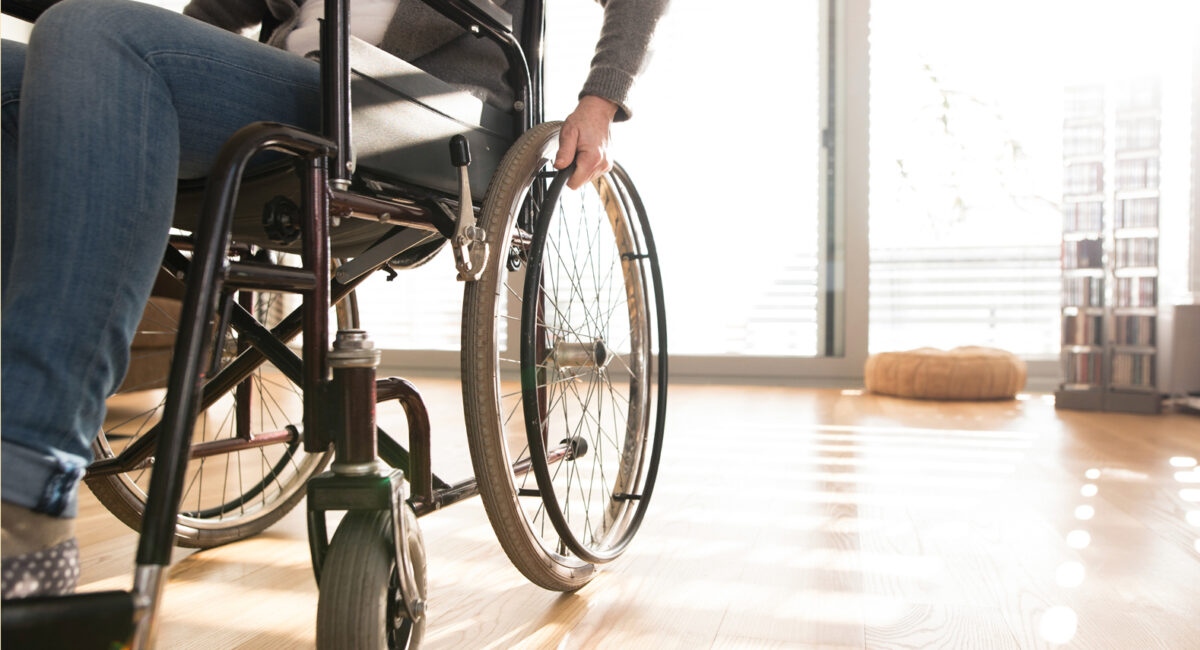Technology has brought about multiple conveniences to the masses amid the COVID-19 situation, with many turning to online shopping or video conferencing platforms for work and communication. But for some persons with physical disabilities, assistive technology is a lifeline that helps them to overcome the limitations of their disabilities and perform daily activities. Some AT devices that are increasingly common include personal mobility aids (PMAs) like manual or motorised wheelchair and mobility scooter.
In this article, senior occupational therapist Ong Yu Yuan and occupational therapist Teng Mei Ling invited Xavier (29), Jehyen (49) and Janetta (31) to share their experiences in using PMAs to go about their daily lives.
How has the PMA benefited you?
Xavier: I have cerebral palsy. I have been using a motorised scooter for about three months as I have difficulties walking long distances. Before getting a scooter, I was not able to go around alone. Now, it is easier to get around on my own using a scooter, and I can go to work and visit my sister’s place independently.
Jehyen: I had a stroke and it affected one side of my body. After the stroke, I had to push my manual wheelchair using one hand and one leg but it’s very difficult, especially when I have to go to work. I have since switched to using a motorised wheelchair for almost three years.
Janetta: I met with a car accident more than ten years ago and am paralysed from waist down. I started using a motorised wheelchair back in 2017 when I wanted to pursue my graduate Diploma. Before that, I was using a manual wheelchair and someone will need to be with me. It’s hard to wheel my manual wheelchair for long distances due to spasms in my legs. I also could not master doing a *wheelie, therefore it’s almost impossible to take the train on my own. With a PMA, I can now travel on public transport independently.
*A “wheelie” is an act where an individual balances on the rear wheels of a manual wheelchair to lift the front wheels. This is an essential skill for manual wheelchair users to overcome kerbs or small gaps, such as the gap between a MRT platform and the MRT. Users will usually need to undergo training by occupational therapists to be able to perform this independently and safely in the community.
What are some difficulties getting around on your PMA?
Xavier: It was challenging initially when I started using the scooter but subsequently, I got used to it. Especially on crowded trains, I have to inform people that I’m alighting so that they will make way. I find it more challenging when visiting shopping malls with fewer entrance as the queue to enter is usually long due to safe management measures. As for work, sometimes when I go to work and the office door is not fully opened, I will need to manually disengage the scooter and ask my colleagues to help push the scooter through the doorway.
Jehyen: Human traffic is a problem as people tend to walk slowly while looking at their phones. This is especially so when taking the train as people tend to walk into me at the train platform, causing my motorised wheelchair to get stuck at the door. However, I noticed that it is more spacious on the train now due to the COVID-19 situation.
It is also a problem when it rains as I cannot go anywhere. I don’t mind getting wet, but the motorised wheelchair cannot get wet. I will have to use a plastic bag to cover the controller and battery. If it is a work day, I will contact my supervisor to inform him that I will be late or that I can’t make it to work.
Also, nowadays when I go for lunch, I have to go one big round to enter the market as there is only one entrance and exit point. So, I will try to bring food from home now.
Janetta: I arrange for wheelchair-accessible transport to take me to work as I don’t want to be late. Also, there is no shelter from the bus stop to my office, so even though it costs more, it’s better to take the wheelchair transport. However, I go home by myself via bus and MRT. If it is raining, I will need to wait for the rain to stop.
There was once when I took the bus, the bell for wheelchair users was placed at an odd position and I couldn’t reach it when I wanted to alight. Now I am more assertive and will inform the bus driver which stop I am alighting at or ask people for help. I notice that passengers will give way more often on the bus and MRT when I am using the motorised wheelchair as compared to a manual wheelchair. Maybe the motorised wheelchair looks scarier? Hahaha!
Are you currently employed and is having a PMA important in your employment?
Xavier: I was working as an administrative assistant and needed to travel to the office daily. However, I was recently let go as my company faced financial issues. Having a PMA is important for me to get to the workplace without needing much assistance from others.
Jehyen: I have been working in a document scanning hub for almost two months, mostly doing document preparation. I have to go to the office every day.
Janetta: Yes, I am working part-time as a social work associate. I mostly work from home due to the current COVID-19 situation, but I would still need to go to the office when I do direct work with my clients. I used to do home visits to client homes before the pandemic but I mostly make calls now. Having a PMA helps to increase my independence.
What are some misconceptions that your colleagues had when they first saw you using a PMA? How did you overcome those misconceptions?
Xavier: Some of my colleagues have worked with persons with disabilities before, so they are more understanding and will step forward to help more readily. For example, they would ask “what help do you need?”, rather than “why do you need to use motorised scooter?”
It is natural for others to be curious to ask about things that they are not familiar with. I have explained some basic usage of the motorised scooter to colleagues who asked.
Janetta: Some of my colleagues thought that I needed someone to fetch me home from work even though I am using a motorised wheelchair. They also assumed that I can overcome steps with my motorised wheelchair. Overall, I think they are not so knowledgeable when they first saw me using a motorised wheelchair.
While I still have not fully overcome the misconceptions, I have tried to educate my colleagues and show them how to use the new set of *anti-tippers on my motorised wheelchair that is easier to manage so that they can help me go up kerbs.
* Anti-tippers are a set of wheels located at the back of the wheelchair which provide additional support to prevent the wheelchair from tipping backwards when tilted to go up small kerbs.
What have your employer done to make your work environment more accessible?
Xavier: Having adedicated space is useful for me to park my motorised scooter. My employer also moved some furniture in the office to make more space. At times, my colleagues also help to push my scooter into the workplace.
Jehyen: Previously, it was harder moving about in my wheelchair due to the narrow walkways in my workplace. They have since made sure that there is more space.
Janetta: My bosses cleared a work passageway for me. I also got to choose a work desk location which is nearer to the corridor that allows me to pass more easily with my wheelchair.
What is one thing you hope for the public to know about persons with physical disabilities at work?
Xavier: Don’t judge a person based on their disabilities. Look past our disabilities and more on our work abilities.
Jehyen: Let us try to overcome misconceptions and we can learn something new together.
Janetta: I would really appreciate if employers can help provide us with opportunities at work.
Check out the following websites to learn more about:
Assistive technology and how it helps persons with disabilities: https://spd.org.sg/specialised-assistive-technology-centre/
Employment support for persons with disabilities: https://spd.org.sg/employment-support-programme/





